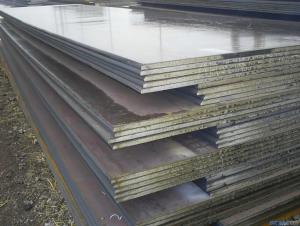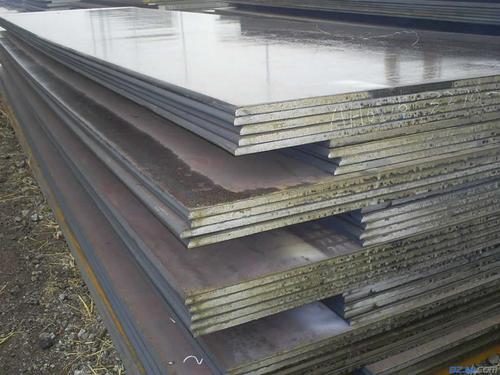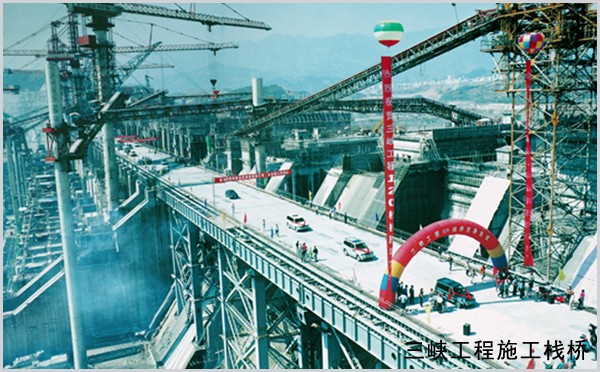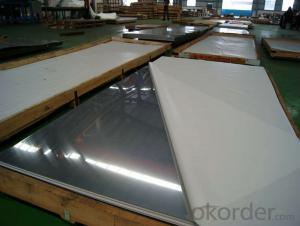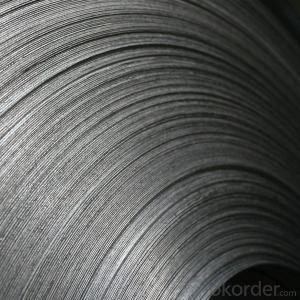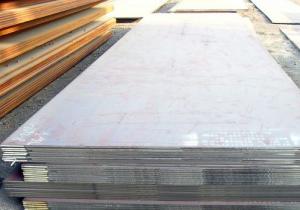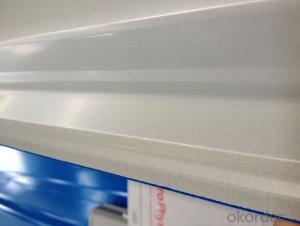The production of hydrogen 15CrMo steel in Wuyang steel works
- Loading Port:
- China Main Port
- Payment Terms:
- TT OR LC
- Min Order Qty:
- -
- Supply Capability:
- -
OKorder Service Pledge
OKorder Financial Service
You Might Also Like
Hydrogen 15CrMo (H) containing WYJ testing, heat treatment, is more than or equal to -10 DEG C im
Hydrogen 15CrMoR, 15CrMoR (H) technical conditions of steel plate production
1 the use of range from Wuyang steel quality management department
The technical conditions applicable to the medium temperature pressure vesselpressure components with less than 150mm thickness of the steel plate.
2 normative references GB713-2008
In 3 dimensions, shape, weight and permissible deviations
3.1 steel plate size, shape and tolerances shall comply with the provisions of GB/T709. 3.2 thickness deviation according to B class or the C GB/T709 class in the contract execution, Naka A.
3.3 plate theoretical weight delivery, theoretical weight the maximum thickness ofsteel plate thickness is permitted and the minimum thickness of the arithmetic mean value. The density of steel 7.85g/ cm 3
The chemical composition of steel requirements, shall be in accordance with the provisions of table 1. Table 1 chemical composition of Wt% components
C Si Mn P Analysis of the S Max Cr Mo melting
0.12~ ~ ~ ~ ~ ~ 0.18 0.15 0.40 0.40 0.70 0.010 0.010
Analysis of 0.8 ~ 1.2 0.45 ~ 0.60 of the finished product
0.10~ ~ 0.20 0.13 ~ ~ 0.43 0.37 ~ ~ 0.73 0.012 0.010 0.75 ~ ~ 1.25 0.43 ~ ~ 0.62
Analysis of Ni Cu Sb* Sn* component of As* Max [H]* melting
Analysis of 0.20 and 0.20 is less than or equal to 0.003 is less than or equal to 0.015 and 0.016 2ppm products
0.20 0.20 0.003 0.015 0.016
Less than or equal to 2ppm
Note: (1) melting analysis should be per furnace (tank), sampling, analysis of products (including the X coefficient) according to Zhang sample delivery. (2) with "*" the element record analysis results. [H] under the premise of ensuring meltinganalysis, but not for the product analysis. Methods: 4.2 smelting by electric furnace+ refining outside the furnace, and through smelting process vacuum degassing.The plates shall be fine grain steel. 4.3 delivery state: steel plate to normalizing + tempering (allows accelerated cooling) delivery. 4.4 mechanical properties, shallcomply with the provisions of table 2. Table 2 project numerical unit room temperature tensile Rm
Thickness is less than or equal to 100mm 450~~590 MPa
>100~150mm 440~~580 room temperature tensile Rp0.2 less than 100mm thickness greater than 295 MPa
>100~150mm
255
Methods: using electric furnace smelting furnace refining, and through + vacuum degassing of the smelting process. The plates shall be fine grain steel. 4.3 delivery state: steel plate to normalizing + tempering (allows accelerated cooling) delivery.
- Q: Why can steel HPB300, steel plate without Q300, steel structure manuscript review, but also continued the Q235, why not improve it?
- HPB's full name is hot rolled round steel (HPB is Hot-rolled Plain Steel Bar) in English, commonly known as wire rod, diameter 6 - 12 rounds of the most common, including HPB235 and HPB300. You haven't met HPB400?. HRB400 and RRB400 are treated steel bars in order to have such high strength. But the general strength, ductility will be reduced, as the saying goes, "tossing" is not resistant to toss about.
- Q: Can steel sheets be painted or coated?
- Yes, steel sheets can be painted or coated. Painting or coating steel sheets can provide protection against corrosion, improve aesthetics, or serve specific functional purposes such as heat resistance or electrical conductivity.
- Q: What are the different types of steel sheet finishes for decorative purposes?
- For decorative purposes, one can find several varieties of steel sheet finishes that are commonly utilized. These finishes are applied to the steel sheet's surface with the intention of enhancing its appearance and achieving a desired aesthetic effect. Some of the most favored finishes for decorative purposes are as follows: 1. Brushed Finish: Achieved by brushing the steel sheet's surface with a fine abrasive material, usually in a straight line pattern, this finish imparts a smooth and satin-like appearance. It is widely used in architectural and interior design applications. 2. Mirror Finish: Also known as a polished finish, this type creates a highly reflective surface that resembles a mirror. The steel sheet is mechanically polished to achieve this finish, and it is commonly seen in decorative applications such as furniture, lighting fixtures, and signage. 3. Patterned Finish: This finish involves embossing or etching a pattern onto the steel sheet's surface. It can be achieved through various techniques like stamping, laser engraving, or chemical etching. Patterned finishes provide a decorative and textured appearance and are often used in applications like elevator panels, wall cladding, and decorative screens. 4. Colored Finish: To add vibrancy and enhance visual appeal, steel sheets can be coated with a colored finish. Processes such as powder coating are employed, where a dry powder is applied to the steel sheet and then cured to create a durable, colored finish. Colored finishes are commonly used in architectural applications like building facades and signage. 5. Antique Finish: This particular finish is designed to give the steel sheet an aged or weathered look, resembling antique metal. Various techniques such as chemical treatments, patinas, or distressing can be employed to achieve this appearance. Antique finishes are often utilized in decorative applications to create a rustic or vintage aesthetic. These are just a few examples of the diverse range of steel sheet finishes available for decorative purposes. Each finish provides a distinct appearance and can be customized to suit specific design preferences. The choice of finish relies on factors such as the desired look, application, and required level of durability for the project.
- Q: How do steel sheets compare to other materials like aluminum or copper?
- There are numerous advantages to using steel sheets over materials such as aluminum or copper. Firstly, steel is significantly stronger and more durable than both aluminum and copper. This makes steel sheets perfect for applications that require high strength and the ability to resist wear and tear, such as construction, automotive manufacturing, and industrial machinery. Secondly, steel sheets have a higher melting point than aluminum and copper. As a result, steel can withstand higher temperatures without deforming or melting, making it suitable for applications involving exposure to high heat or fire. Additionally, steel sheets are more cost-effective than both aluminum and copper. Steel is readily available and relatively inexpensive compared to these other materials. This makes steel sheets a more economical choice for large-scale applications that require a substantial amount of material. Furthermore, when properly coated or treated, steel sheets have excellent corrosion resistance properties. In contrast, aluminum and copper are more susceptible to corrosion and require additional protective measures. This makes steel sheets a superior choice for outdoor or marine applications where exposure to moisture and harsh environments is a concern. Lastly, steel sheets are highly recyclable, making them a more sustainable choice compared to aluminum and copper. Steel is one of the most recycled materials globally, with a recycling rate of nearly 90%. This reduces the environmental impact and conserves natural resources. In summary, steel sheets offer exceptional strength, durability, heat resistance, cost-effectiveness, corrosion resistance, and recyclability compared to materials like aluminum or copper. These qualities make steel sheets a versatile and reliable choice for a wide range of applications across various industries.
- Q: What are the properties of deep drawing properties in sheet steel?
- Refers to the change of the thickness of steel plate and the change of plane (length and width direction) when the steel plate is pressed.
- Q: Are steel sheets suitable for agricultural machinery?
- Yes, steel sheets are suitable for agricultural machinery due to their durability, strength, and ability to withstand harsh conditions commonly encountered in farming operations.
- Q: What is the weight of a steel sheet?
- The weight of a steel sheet can vary depending on its dimensions, thickness, and density.
- Q: Are steel sheets available in different grades of stainless steel?
- Yes, steel sheets are available in different grades of stainless steel. Stainless steel is a versatile material that is used in various industries, such as construction, automotive, and manufacturing. It is known for its corrosion resistance and durability. There are several grades of stainless steel, each with its own unique properties and composition. The most common grades include 304, 316, 430, and 201. These grades differ in their chemical composition, such as the amount of chromium, nickel, and other alloying elements present. The choice of grade depends on the specific application and the desired characteristics of the steel sheet. For example, grade 304 is commonly used for general purposes due to its excellent corrosion resistance and strength. Grade 316 is often preferred in environments with high exposure to corrosive elements, such as marine applications. Steel sheets are available in various thicknesses, sizes, and finishes, making them suitable for different applications. Whether you need stainless steel sheets for architectural purposes, food processing equipment, or industrial machinery, there is a grade of stainless steel that can meet your requirements. It is important to consult with a supplier or manufacturer to determine the appropriate grade of stainless steel sheet for your specific needs. They can provide guidance on the best grade based on factors such as the intended use, environmental conditions, and budget constraints. Overall, the availability of different grades of stainless steel sheets ensures that there is a suitable option for diverse applications.
- Q: Can steel sheets be used for electromagnetic shielding?
- Yes, steel sheets can be used for electromagnetic shielding. Steel is a highly conductive material, which means it can effectively divert and absorb electromagnetic waves, preventing them from penetrating through the shield. This makes steel sheets an excellent choice for applications requiring electromagnetic shielding, such as electronic devices, power transformers, and MRI machines.
- Q: Are the steel sheets suitable for automotive applications?
- Steel sheets are an excellent choice for automotive applications due to their exceptional strength, durability, and versatility. The automotive industry widely employs steel because of these qualities. It offers outstanding crash resistance, making it perfect for ensuring passenger safety in vehicle structures. Furthermore, steel sheets can easily be molded into intricate shapes, enabling the production of various automotive components like body panels, chassis, and frames. Steel also possesses excellent corrosion resistance, which is crucial for enduring harsh environmental conditions. In addition, it is cost-effective and readily accessible, making it a preferred option for automakers. All in all, steel sheets prove to be a dependable and fitting material for automotive applications.
Send your message to us
The production of hydrogen 15CrMo steel in Wuyang steel works
- Loading Port:
- China Main Port
- Payment Terms:
- TT OR LC
- Min Order Qty:
- -
- Supply Capability:
- -
OKorder Service Pledge
OKorder Financial Service
Similar products
Hot products
Hot Searches
Related keywords
